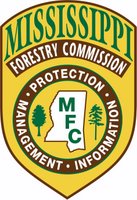Storm Recovery for Urban Trees --- 2 Free Workshops
1. Thursday, December 1, 2005. 9:45 am – 3:30 PM at
Orange Grove Community Center, Hwy 49 North, Gulfport
2. Friday, December 2, 2005. 11:00 am-2:00pm at the Old Place, Gautier Family Home, La Maison Gautier, on Hwy 90 in Gautier, just before crossing Singing River Bridge
Who? Homeowners, municipal leaders, planners, landscape architects, arborists, foresters, engineers, contractors and volunteers
Why? Hurricane Katrina bent, broke, and uprooted trees. It blew off leaves, broke limbs, and covered many trees and roots with salt water. But this hurricane is only the first wave of damage to trees in our community. The second and possibly worst wave of damage occurs during debris removal and construction activity. A second wave of tree loss would be a tragedy to our entire community. We have an opportunity to avoid it.
Registation is Free. To help us provide materials and lunch, please register for Orange Grove workshop by contacting the Harrison County Extension Office at harrison@ext.msstate.edu. To register for Gautier workshop contact the MS Gulf Coast Forestry Council at dyowell@aol.com or 601-672-0755
Questions this workshop will answer:
1. How do I file a casualty loss tax deduction for shade tree damage?
2. What damage is considered light to moderate and my tree is likely to recover?
3. How can I rehabilitate damaged trees back to health?
4. What kinds of damage are considered so serious that the tree needs removal?
5. How can I reduce my risk to further loss of trees, life, and property during debris removal and construction?
6. What are recommended replacement trees and shrubs?
7. Where are funds available to help my trees recover? What help or opportunities are available?
Agenda:
Welcome
Shade Tree Casualty Loss and Protecting Trees
Remedial Treatment for Damaged Trees
Lunch Provided
Safety During Debris Removal
Landscaping After the Storm
Coastal Program, Resources and Funding
Panel discussion and questions
Gulf Coast Urban Forest Council Meeting (optional)
Sponsors: Harrison/Jackson County Board of Supervisors through Public Law 106-393
MS Urban Forest Council, Gulf Coast Urban Forest Council, County Forestry Associations, MSU Extension Service, MS Forestry Commission, Southern MS Planning and Development District, and Resource Conservation and Development District (NRCS), Audobon and the Gautier Family




